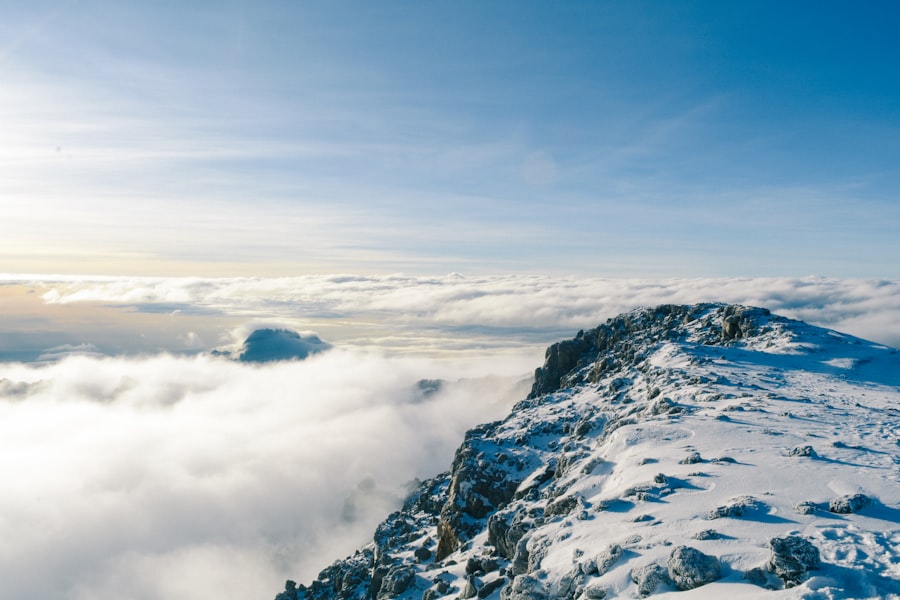Download links
How to install Soar Through the Skies with 8k8 Wingsuit Flying APK?
1. Tap the downloaded Soar Through the Skies with 8k8 Wingsuit Flying APK file.
2. Touch install.
3. Follow the steps on the screen.
Description
Wingsuit flying is often described as one of the most exhilarating experiences one can have, combining the adrenaline rush of skydiving with the freedom of flight. As a wingsuit pilot leaps from a high altitude, the sensation of soaring through the air is akin to that of a bird gliding effortlessly on thermal currents. The suit itself, designed with fabric wings between the arms and legs, allows for a unique form of aerial navigation, enabling pilots to control their descent and direction with remarkable precision.
This exhilarating sport offers not just the thrill of freefall but also the ability to maneuver through the sky, creating a dance with gravity that is both breathtaking and liberating. The experience of wingsuit flying is not merely about the act of jumping from a plane; it is about embracing the elements and feeling an intimate connection with the environment. As pilots navigate through the air, they often describe a profound sense of freedom, as if they are transcending the limitations of the human body.
The rush of wind against their faces, the panoramic views of landscapes unfolding below, and the sheer speed at which they travel create an intoxicating cocktail of sensations. Each flight becomes a personal journey, where pilots can push their limits and explore new horizons, both literally and metaphorically. The thrill is not just in the act itself but in the mastery of technique and the pursuit of ever-greater challenges.
Key Takeaways
- Wingsuit flying provides an exhilarating and thrilling experience for adrenaline junkies.
- The history and evolution of wingsuit flying dates back to the early 20th century, with significant advancements in technology and safety measures over the years.
- Proper training and safety measures are crucial for wingsuit flying to ensure the safety of the participants.
- Some of the best locations for wingsuit flying include the Swiss Alps, Norway, and the Dolomites in Italy.
- The future of wingsuit flying technology is expected to bring advancements in aerodynamics, safety equipment, and performance tracking.
- Beginners in wingsuit flying should prioritize proper training, mentorship, and gradual progression to ensure a safe and enjoyable experience.
The History and Evolution of Wingsuit Flying
The origins of wingsuit flying can be traced back to the early 20th century when pioneers began experimenting with various forms of human flight. The first recorded wingsuit was developed by a Frenchman named Franz Reichelt in 1912, who famously attempted to fly from the Eiffel Tower using a parachute suit. Although his endeavor ended tragically, it laid the groundwork for future innovations in wingsuit design.
Over the decades, various inventors and enthusiasts contributed to the evolution of wingsuits, refining their designs to improve aerodynamics and safety. The modern wingsuit, as we know it today, began to take shape in the late 1990s and early 2000s. This period saw significant advancements in materials and technology, allowing for more sophisticated designs that enhanced performance.
Pioneers like Jari Kuosma and Robert Peirce played crucial roles in developing wingsuits that offered greater control and stability during flight. The introduction of specialized fabrics and improved wing shapes enabled pilots to achieve longer flights and greater distances, transforming wingsuit flying from a niche activity into a popular extreme sport. As more enthusiasts embraced this thrilling pursuit, wingsuit flying gained recognition within the skydiving community and beyond.
The Importance of Proper Training and Safety Measures

While wingsuit flying offers unparalleled excitement, it also comes with inherent risks that necessitate rigorous training and adherence to safety protocols. Proper training is essential for anyone looking to take up this sport, as it equips pilots with the skills needed to navigate complex aerial environments safely. Most experienced wingsuit pilots recommend that aspiring flyers first gain proficiency in traditional skydiving techniques before transitioning to wingsuit flying.
This foundational knowledge is crucial for understanding freefall dynamics, parachute deployment, and emergency procedures. Safety measures are paramount in wingsuit flying, given the high speeds and altitudes involved. Pilots must be well-versed in pre-flight checks, including inspecting their gear for any potential malfunctions.
Additionally, understanding weather conditions is vital; strong winds or poor visibility can significantly increase risks during flight. Many wingsuit pilots also utilize tracking devices to monitor their altitude and speed, providing real-time data that can be critical for making informed decisions during a jump. Furthermore, flying in groups or with experienced mentors can enhance safety by allowing for shared knowledge and support during flights.
For more information on wingsuit flying safety protocols, you can visit the Fédération Aéronautique Internationale (FAI) website.
The Best Locations for Wingsuit Flying
| Location | Altitude (feet) | Distance (miles) | Scenery |
|---|---|---|---|
| Swiss Alps | 13,000 | 3 | Mountains, lakes |
| Zion National Park, USA | 9,000 | 2.5 | Canyons, rock formations |
| Lauterbrunnen Valley, Switzerland | 10,000 | 2 | Waterfalls, greenery |
| Chamonix, France | 15,000 | 4 | Mont Blanc, glaciers |
Choosing the right location for wingsuit flying can greatly enhance the experience, as certain environments offer unique challenges and breathtaking views. One of the most iconic spots for wingsuit enthusiasts is Lauterbrunnen Valley in Switzerland. Known for its stunning cliffs and picturesque landscapes, this location provides ample opportunities for high-altitude jumps amidst breathtaking scenery.
The valley’s vertical drops allow pilots to experience long flights while navigating through narrow gorges and over lush meadows. Another popular destination is the stunning fjords of Norway, where dramatic cliffs plunge into deep waters. Locations like Kjerag offer not only spectacular views but also a variety of jump options that cater to different skill levels.
The combination of rugged terrain and expansive vistas creates an unforgettable backdrop for wingsuit flying. In addition to these renowned spots, many pilots seek out remote mountain ranges or coastal cliffs around the world, where they can enjoy solitude and pristine natural beauty while engaging in their passion for flight.
The Future of Wingsuit Flying Technology
As technology continues to advance at a rapid pace, the future of wingsuit flying promises exciting developments that could enhance both performance and safety. Innovations in materials science are leading to lighter and more durable fabrics that can withstand extreme conditions while providing better aerodynamics. These advancements may allow for even more streamlined designs that enable pilots to achieve greater speeds and longer flights without compromising safety.
Moreover, the integration of technology into wingsuit flying is becoming increasingly prevalent. For instance, wearable devices equipped with GPS tracking and altitude monitoring are already being used by many pilots to gather data during flights. In the future, we may see even more sophisticated systems that provide real-time feedback on performance metrics or even augmented reality displays that assist pilots in navigation and situational awareness.
As these technologies evolve, they will likely play a crucial role in shaping the next generation of wingsuit flying, making it safer and more accessible to enthusiasts around the globe.
Tips for Beginners in Wingsuit Flying

For those eager to embark on their wingsuit flying journey, there are several essential tips to keep in mind that can help ensure a successful start. First and foremost, gaining experience in skydiving is crucial; aspiring wingsuit pilots should aim for at least 100 jumps before considering transitioning to a wingsuit. This experience not only builds confidence but also familiarizes individuals with freefall dynamics and parachute deployment procedures.
Once ready to take the leap into wingsuit flying, beginners should seek out reputable training programs or experienced mentors who can provide guidance on technique and safety practices. Learning how to control body position during flight is vital; small adjustments can significantly impact speed and direction. Additionally, practicing emergency procedures is essential; knowing how to respond in case of equipment failure or unexpected situations can make all the difference in ensuring a safe flight experience.
Finally, maintaining a mindset focused on continuous learning and improvement will help beginners navigate the challenges of this thrilling sport while fostering a deep appreciation for the art of flight.
FAQs
What is 8k8 Wingsuit Flying?
8k8 Wingsuit Flying is an extreme sport that involves flying through the air using a specialized jumpsuit called a wingsuit. The “8k8” refers to the goal of flying at an altitude of 8,000 meters (26,247 feet) and then landing safely on the ground.
How does 8k8 Wingsuit Flying work?
In 8k8 Wingsuit Flying, participants jump from an aircraft at high altitude and glide through the air using the wingsuit. The wingsuit is designed to increase the surface area of the human body, allowing for greater lift and the ability to glide for longer distances.
What are the risks involved in 8k8 Wingsuit Flying?
8k8 Wingsuit Flying is an extremely dangerous sport, with risks including high-speed impacts, collisions with obstacles, and the potential for equipment malfunctions. Participants must undergo extensive training and use specialized safety equipment to mitigate these risks.
What kind of training is required for 8k8 Wingsuit Flying?
Participants in 8k8 Wingsuit Flying must undergo rigorous training in skydiving, wingsuit flying techniques, and emergency procedures. They must also have a thorough understanding of aerodynamics and meteorology to safely navigate through the air at high altitudes.
What equipment is used in 8k8 Wingsuit Flying?
Participants in 8k8 Wingsuit Flying use a specialized wingsuit, a parachute for landing, and a helmet with a visor for protection. They may also use additional safety equipment such as altimeters, GPS devices, and emergency parachutes.
What are the world records for 8k8 Wingsuit Flying?
As of now, the world record for the highest altitude wingsuit jump is 37,265 feet (11,352 meters), set by Alan Eustace in 2014. The record for the longest wingsuit flight is 32.5 miles (52.3 kilometers), set by Jarno Cordia in 2016.
Are there any organizations or competitions for 8k8 Wingsuit Flying?
There are several organizations and events dedicated to wingsuit flying, including the World Wingsuit League and the Red Bull Aces competition. These events showcase the skills of wingsuit pilots and provide a platform for them to compete and push the boundaries of the sport.





